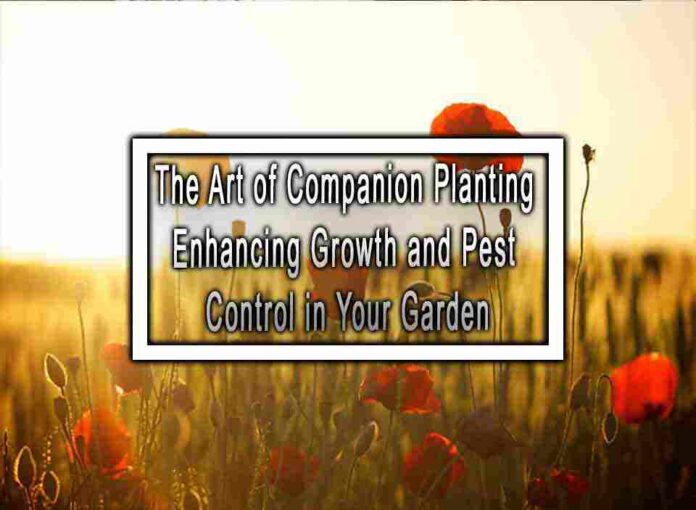Companion planting is a gardening technique that involves growing different plants together to maximize their growth, improve crop health, and enhance pest control. By strategically planting certain combinations of plants, gardeners can create a more balanced and productive ecosystem in their garden. Here are some key principles and examples of companion planting:
1. **Complementing Growth:**
Certain plant combinations can benefit each other by providing shade, support, or nutrient exchange. For example:
– Tall plants like corn or sunflowers can provide shade and support for climbing beans or cucumbers.
– Plants with deep roots, such as tomatoes or carrots, can help break up the soil and improve water and nutrient absorption for shallow-rooted plants like lettuce.

2. **Nitrogen Fixation:**
Some plants, like legumes (beans, peas, clover), have the ability to fix nitrogen from the atmosphere into a form that other plants can use. Interplanting nitrogen-fixing plants with nitrogen-demanding plants can improve soil fertility. For instance:
– Planting beans alongside corn helps provide nitrogen to the corn, leading to healthier growth.
3. **Repelling Pests:**
Some plants naturally repel certain pests, helping to protect neighboring plants from infestations. This is known as “companion repelling.” For example:
– Marigolds are known to repel nematodes and some insects. Planting them near tomatoes or roses can help protect these plants from harmful pests.
– Alliums (onions, garlic, chives) can deter aphids and other pests. Planting them near carrots or lettuce can help keep these crops safe.
4. **Attracting Beneficial Insects:**
Certain plants can attract beneficial insects, such as pollinators and predators that feed on garden pests. This is known as “companion attracting.” For example:
– Planting flowers like lavender, daisies, or borage near vegetable crops can attract bees and other pollinators, increasing fruit and vegetable yields.
– Nasturtiums attract predatory insects that feed on aphids and other harmful pests, helping to keep pest populations in check.
5. **Trap Cropping:**
This method involves planting a specific crop that is highly attractive to pests away from the main crops. The idea is that pests will be drawn to the trap crop, leaving the main crops relatively unharmed. For example:
– Planting a patch of radishes, which are highly attractive to flea beetles, can help protect nearby crops like eggplants from flea beetle infestations.
6. **Companion Planting Charts:**
Many gardening resources provide companion planting charts that list compatible and incompatible plant combinations. These charts are helpful for planning your garden layout and choosing suitable companion plants for each crop.
It’s important to note that while companion planting can enhance growth and pest control in your garden, it is not a foolproof method and may not entirely eliminate pest issues. Regular monitoring and other integrated pest management (IPM) practices, such as crop rotation, proper watering, and maintaining good garden hygiene, are also essential for maintaining a healthy garden ecosystem. Experiment with different companion planting techniques to find what works best for your specific garden and local conditions.










